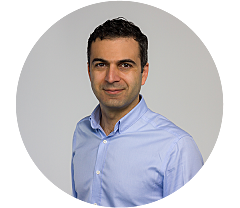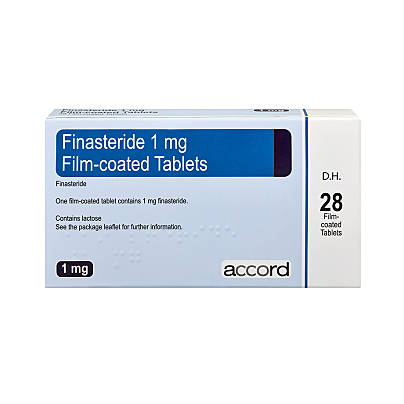How to Stop or Slow Down Hair Loss in Men

Medically reviewed by
Dr Crystal WyllieLast reviewed: 06 Jul 2022
Hair loss is a common condition that can affect both men and women. In men, hair loss can affect around 50% of those over 50. While it is common, there are ways that you can stop hair loss and maintain a healthy scalp.
You can take medication to prevent hair loss as well as opt for hair transplant surgery, but these are not the only methods available. Addressing your lifestyle and making changes to your diet and exercise can be just as powerful as taking medication. Finding what’s right for you can be down to trial and error, so be patient with yourself as you try different ways to prevent hair loss.
5 ways to prevent or reduce the chance of hair loss
Hair loss occurs when testosterone converts to a hormone called dihydrotestosterone (DHT). The build up of DHT in your scalp shrinks your hair follicles and causes your hair to thin or fall out. Hair loss is also known as androgenetic alopecia.
If the hair follicles shrink to the point that they disappear, you will not be able to grow those follicles back. This leads to total baldness or permanent hair loss.
If you have concerns about hair loss or alopecia, you can fill out our hair loss questionnaire to get advice from a doctor about hair loss treatment. We provide a fast and convenient service and can deliver prescription treatment directly to your door, if it’s right for you.
1. Prescription medication
Prescription medication for hair loss treats the cause of hair loss. By targeting the hair loss mechanism, these medications will promote hair growth and encourage a healthy scalp.
If hair loss is recognised promptly, you can get started on treatment during the early stages. This is more effective than trying to treat hair loss once it has advanced. Look out for the early signs of hair loss.
Keep in mind that you’ll need to use prescription medications for at least 3 to 4 months before you start to see any improvement. Prescription medications for hair loss will not work if you are completely bald as they act on shrinking hair follicles.
Finasteride (Propecia)
Finasteride tablets treat male pattern baldness and cannot be used by women.
Finasteride stops the conversion of testosterone to DHT. This helps reverse the hair loss process and promote hair regrowth. Finasteride is the non branded name for Propecia.
Clinical trials have shown that finasteride has helped with hair regrowth or maintained hair in 90% of men. Finasteride is also unlikely to interact with any other medications you’re already taking. This makes it a safe and effective treatment.
Minoxidil
Minoxidil can be used to treat male and female pattern baldness. It works by promoting blood flow to your scalp and prolonging the growth phase of your hair follicles. This allows shrunken hair follicles more time to grow.
Minoxidil is available under the brand name Regaine. It is available over the counter as a foam or liquid. Minoxidil is suitable for both men and women.
When you take finasteride or minoxidil, you might experience some side effects. These usually last for a short period of time. You can speak to a doctor or pharmacist if you are concerned about the side effects.
You can request hair loss medication from Asda Online Doctor. Our questionnaire is quick and easy to fill out. One of our doctors will check if finasteride or minoxidil is right for you. We can deliver the medication to your chosen address or you can collect it from an Asda Pharmacy.
from £25.00
from £47.00

No results found.
Please check your spelling or try another treatment name.
2. Lifestyle changes
Making changes to your lifestyle can have a positive impact on the health of your scalp. While it might sound daunting to make big changes, try to think of it as smaller goals. Making small, achievable goals out of these changes is better than trying to do everything in one go.
Effective lifestyle changes always start with small steps. Give yourself a small goal you know you can achieve and soon you can transform your daily routine into one that is healthy and enjoyable.
Quit smoking
Smoking can affect the health of your scalp by:
- damaging your blood vessels which reduces blood circulation
- damaging the DNA in the cells in your hair follicles
- promoting inflammation in your body
These factors can contribute to hair loss, making your hair more brittle and prone to breakage. A reduced blood flow means your hair follicles are not getting the nutrients they need for healthy growth.
Giving up smoking has many health benefits even from the first few days of quitting. While there are plenty of reasons to quit for the sake of your heart and lungs, you’ll also get better skin, whiter teeth and better smelling breath. It’s a win win situation for you!
Balanced diet
A balanced diet should be one that you enjoy and is beneficial for you. Poor hair growth and hair loss can happen when you have nutritional deficiencies. These include a lack of:
- vitamin A (found in carrots, sweet potatoes, spinach, eggs and milk)
- various B vitamins (found in meat, fish, whole grains and leafy greens)
- iron (found in red meat, spinach, eggs and lentils)
- zinc (found in pumpkin seeds, spinach, beef and lentils)
Some early studies suggest that a lack of vitamin C (found in citrus fruits) and E (found in sunflower seeds, spinach and avocados) may also play a part.
If you follow a certain diet that excludes red meat or fish, consider taking a supplement. Some vitamins, like vitamin B12, can only be found in animal sources or in some fortified foods. You can find vitamin supplements at your local pharmacy or health food shop.
Reduce stress
Stress can be one of the main causes of hair loss, but it can also impact your health in many different ways. Making positive steps to manage your stress can include getting more sleep and avoiding triggers where possible. You might find exercising, going for a walk or practising mindfulness techniques to be useful ways in managing stress.
If you regularly experience stress or anxiety, speak to a doctor for advice on what to do.
3. Haircare
You can prevent hair damage by taking appropriate steps to care for your hair. There are many self care techniques you can implement to ensure your hair is healthy.
This includes using hair products that do not have harsh chemicals, including shampoos and conditioners. Using a conditioner is also important in maintaining healthy hair. Conditioners help protect your hair from damage by making your hair softer and more flexible to style.
Use anti DHT shampoos
Using anti DHT shampoo can reduce the amount of DHT in your hair follicles. If you have hair loss, your scalp will have a higher level of DHT than normal. Anti DHT shampoos can range from high end products to more affordable options. You can ask your dermatologist for more advice on anti DHT shampoos.
Products that contain caffeine can encourage hair growth. There’s evidence to suggest that caffeine can prevent hair loss by stimulating growth at the root of the hair follicle. Caffeine has also been shown to prevent testosterone from reducing the size of the hair follicles.
Whichever shampoo you decide to use, you should use it consistently to make sure you get the best results. You should see an improvement in hair growth within a couple of months, but make sure you also read the individual product packaging.
Be gentle when brushing and styling
Be gentle when you are grooming your hair. Tight hairstyles like high buns and ponytails can pull on the scalp and create tension on your scalp. This can lead to hair loss in the areas where there is most tension. Try to wear your hair in loose styles with minimal friction.
To avoid further damage, you should also choose hair care products that contain ingredients that are kind to your hair and skin. It’s also better to let your hair dry naturally than using heat. If you do use a hairdryer, make sure you use the lowest heat setting to avoid damaging your hair.
Reduce how often you get your hair coloured or chemically treated. While hair salons will advise you on aftercare for these treatments, it’s best to leave your hair alone for a few months to allow it to become healthy again.
4. Alternative treatments
The main alternative treatment for hair loss is low level laser therapy. Laser therapy is an alternative to taking medications for hair loss and hair transplants. The procedure is far less invasive than hair transplants.
Laser therapy has been proven to be effective in treating hair loss. A study in 2013 showed an increase in hair growth in men with alopecia when treated with laser therapy.
Laser therapy
Low level laser therapy uses red light therapy to stimulate hair growth from your hair follicles. A beam of light emits photons that are absorbed by the cells in your scalp. The exact mechanism of laser therapy is not known, but it is thought one action of the laser is to stimulate vasodilation and improve blood flow to the scalp.
Laser therapy is safe and pain free, making it a potential alternative to other hair loss treatments. Laser therapy is aimed at those in the early stages of hair loss.
While there are few side effects to laser therapy, there are other factors you may want to consider. It can take a few months before you see improvement in your scalp and you’ll need to have a few sessions a month consistently. Laser therapy is not available on the NHS and it can be expensive to find a private practitioner.
5. Hair Transplants
Hair transplants are a type of cosmetic surgery which means you’ll need to find a private clinic that offers the service. Hair transplants work by moving hair from one part of your body to another area.
Hair transplants are the most expensive hair loss prevention treatment. Transplants are usually recommended if you have permanent baldness. These types of transplants are carried out under local anaesthetic. This means you’ll be awake during the procedure but will not feel any discomfort.
As hair transplants are a surgical procedure, you may need to take a few days off work to recover. You should be able to return to work after around 3 days. You’ll need to be gentle with your hair for the first 2 weeks of recovery, but you should be able to wash your hair after the first week.
You’ll see the most improvement in your hair after a transplant around 12 to 18 months.
The 2 main types of hair transplants are follicular unit transplant (FUT) and follicular unit extraction (FUE).
FUT (Follicular Unit Transplant)
During a follicular unit transplant a thin strip of skin with hair is removed from the back of your head and divided up. Each piece will contain a small amount of hair, usually around 1 to 4 hairs. These are called hair grafts.
The grafts are placed into cuts made in your scalp. The surgeon will use some stitches to close the area they took hair from. This means you may have a scar on the back of your head but it is generally not visible.
FUE (Follicular Unit Extraction)
During the follicular unit extraction procedure, individual hairs are removed from the back of your head. These are placed into tiny cuts made in the scalp one by one.
If a large area is being treated, you may need to have 2 or more procedures a few months apart.
You can find out more information about these procedures at the British Association of Hair Restoration Surgery.

Crystal qualified in Medicine at Barts and the London School of Medicine and Dentistry in 2010. She then trained as a GP in London hospitals and practices. She has a particular interest in reproductive, sexual, and women’s health.
Meet our doctorsArticle created: 06 Jul 2022
Last reviewed: 06 Jul 2022
-
Male pattern baldness, Patient.info [accessed January 2022]
-
Scalp and hair conditions, NICE/BNF [accessed January 2022]
-
Finasteride, NICE/BNF [accessed January 2022]
-
Minoxidil, NICE/BNF [accessed January 2022]
-
Hair Transplant, NHS [accessed January 2022]
As well as topical treatments like shampoos, you can also treat your hair loss with oral tablets. Asda Online Doctor by ZAVA offers both shampoos and oral tablets to help reduce hair loss and promote new hair growth.




(Reviews are for ZAVA UK)


GMC: 7074021

GMC: 6149061

GMC: 7085115









